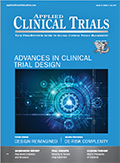Real-World Evidence Gains Traction for Informing Clinical Research
Applied Clinical Trials
Researchers and sponsors are looking to use RWE information to help in trial design, product use, developing new therapies, and gaining market approval.
Jill Wechsler

With more data on patient experience with medical treatments, researchers and sponsors are looking to use this information to help design clinical studies, expand product uses, and assess the effects of therapies in practice. Real-world evidence (RWE) developed from real-world data (RWD) most often supports expanded labeling and post-approval safety tracking, but sponsors now seek to leverage such information in developing new therapies and gaining market approval. The 21st Century Cures Act backs such efforts, and FDA is responding with a range of initiatives to assess appropriate methods for tapping into data available from electronic health records (EHRs), insurance claims, patient registries, and mobile technologies.
A potential use of RWD, for example, may be in postapproval pregnancy safety studies, as seen in recent FDA initiatives to evaluate more effectively the effects and risks of drugs and biologics used during pregnancy or breastfeeding. FDA issued draft guidance in May with recommendations for broadening methods for collecting safety information to include data from EHRs, case-control studies, and population-based surveillance.
FDA also wants to learn more about the extent that sponsors and researchers are utilizing RWD and RWE in developing and testing new therapies. Another guidance published last month requests that sponsors indicate in cover letters to investigational new drugs (INDs), new drug applications (NDAs), and biologics license applications (BLAs) if the submission includes such information. FDA outlines various situations where RWD could be useful and how this information may help provide evidence of safety or efficacy in drugs and biologics.
These advisories continue to build on the Framework for Real-World Evidence, published by FDA last December to encourage the use of and to explain concerns in advancing application of RWE through the product life cycle, including clinical trial design, patient recruitment, and postmarket monitoring of product effects. FDA seeks to clarify policies that support appropriate use of RWE to expand product labels with additional indications, changes in dose or route of administration, additional patient populations, and further safety information.
Testing new uses
To ensure that RWE is reliable, relevant, and complements existing information, FDA is working with research organizations, patient advocates, and sponsors on pilot projects to expand the quantity, quality, and diversity of information that can be captured and measured. Two demonstrations aim to examine how RWD may inform recruitment inclusion and exclusion criteria for studies of children with serious arthritis and with inflammatory bowel disease. Another study involves a real-world randomized trial on how adults with serious pulmonary conditions respond to two different therapies. RWD may be particularly useful in evaluating uncommon conditions or rare tumor types, possibly replacing the need for randomized controlled post-marketing studies. These projects aim to provide more experience in utilizing RWD in clinical trials, and to test both innovative and familiar study designs.
These developments were examined further by a panel of experts at the annual meeting of the Food and Drug Law Institute last month in Washington, D.C. David Martin, associate director for real-world evidence analytics in the Office of Medical Policy of the Center for Drug Evaluation and Research (CDER), described the many challenges in tapping information sources for RWD. While EHRs may provide a more complete and granular clinical picture of a patient’s condition, Martin noted that the data may not be standardized, consistent, or fully documented. He also described opportunities for the research community to work with FDA on demonstration projects examining ways to capture clinical trial endpoints, reduce confounders, and engage with patients through mobile technology. The aim is to gain more experience with real-world randomized study designs and registries and to “pressure test” the performance of non-interventional study designs.
A lead initiative in this area is to expand RWD collection through mobile technologies such as wearable devices and biosensors, and further guidance will explain how sponsors may use these methods to fill information gaps. Martin urged sponsors to engage with FDA during protocol development to gain early input on cohort identification, exposure, outcomes, and covariates. FDA officials are committed to incorporating the full potential of RWD and RWE in product development and oversight, he said, and are encouraging multi-stakeholder collaborations to move forward. The agency also is working with international organizations to advance common methods for using information from patients and providers throughout the product life cycle.
Jill Wechsler is the Washington Correspondent for Applied Clinical Trials
